
Table of Contents
Ireland in the Spring
Ireland in spring can be one of the nicest times of the year in the country. In comparison to the summer tourist season, spring can be relatively quiet. As well as encountering fewer tourists, you might just be able to have some of the country’s most stunning locations, including the Connemara beaches, completely to yourself!
As the days get longer and warmer, nature starts to wake up from the gray winter months and Ireland’s landscape slowly comes back to life. It is not too long before it is in full bloom again.
Visiting Ireland in Spring?
Spring in Ireland takes place during the shoulder tourist season and can be a good time to plan an Ireland spring break, depending on what you want to see and do. This time of year is ideal if you want to visit many of the tourist attractions out of the main summer tourist season. Prices often tend to be cheaper during this spring break time, accommodation availability is typically better and there are fewer crowds than in the summer.
Some things to keep in mind if you plan on visiting Ireland in spring is that as it is still off the main season, some attractions and services may not yet be operating their full summer opening hours. The Irish spring weather may also still be a little mixed at this stage of the year, so it may be difficult to plan outdoor activities or longer road trips.
Find out the best time to visit Ireland for your itinerary here.
Irish for Spring
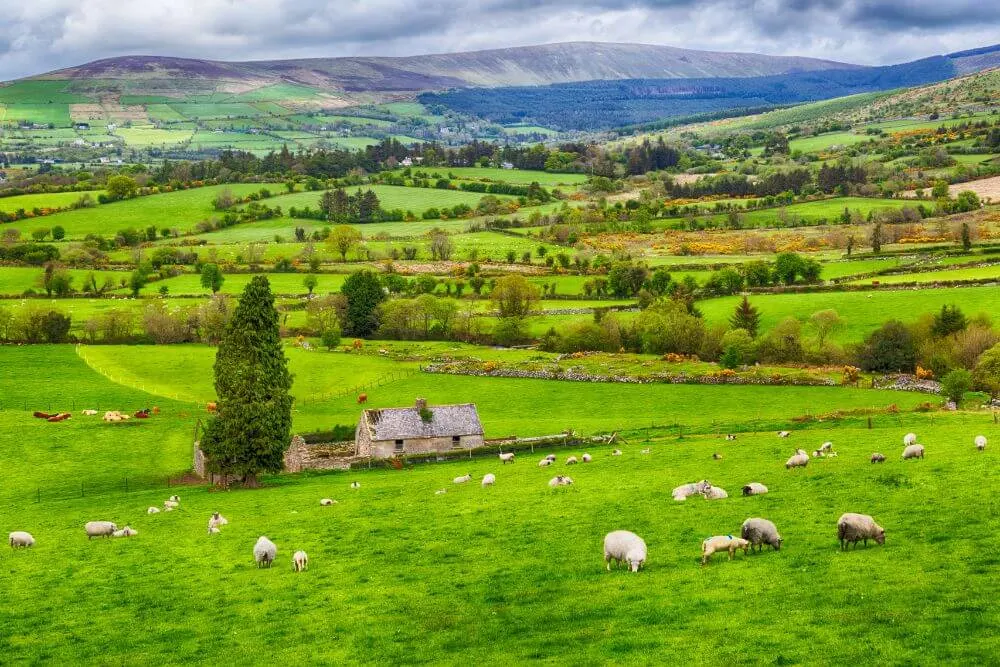
The Irish word for spring is earrach [AR-ukh]. If you would like to try a little bit of Irish pronunciation, you can check out how to say “it’s spring” in Irish here.
When is spring in Ireland?
In terms of the seasonal weather changes, the months of spring in Ireland occur during March, April and May. Over the course of these months, the weather slowly starts to improve and warm up as the days become longer and summer starts to approach.
Is February spring in Ireland?
Is February spring or winter in Ireland can be a little tricky to answer because traditionally, 1 February, has been seen as the start of spring in Ireland. The origins of this tradition are thought to have originated in the Gaelic seasonal calendar.
The feast of Saint Brigid, the patroness Saint of Ireland, is celebrated on 1 February. Interestingly, the Goddess Brigid was revered as a Celtic Goddess in Irish mythology long before she became a Christian saint and is associated with healing, holy wells, fire and a transition from darkness into light. It is therefore significant that her feast day coincides with the important spring festival of Imbolc.
What is Imbolc?
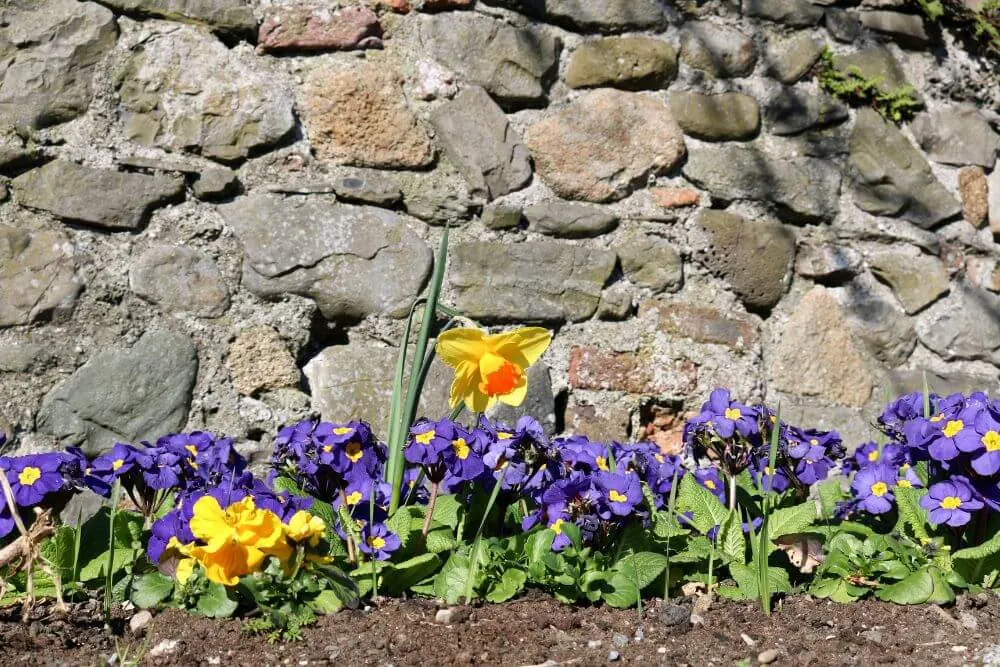
Imbolc, or Imbolg as it is sometimes spelled, is an ancient festival to mark the beginning of spring. It is celebrated on 1 February, which is roughly halfway between the winter solstice (around 21 December) and the spring Equinox (ca. 21 March).
This is one of four major ancient festivals that were marked and celebrated in Gaelic Ireland. The other festivals include Beltane (1 May), Lughnasadh (1 August) and Samhain (1 November).
Starting in 2023, Ireland will have a national public holiday on 1 February each year to mark Imbolc and St. Brigid’s Day. (Don’t get caught out if you are in Ireland on this day as many shops and services will be closed or have different opening hours!)
Ireland in Spring Weather
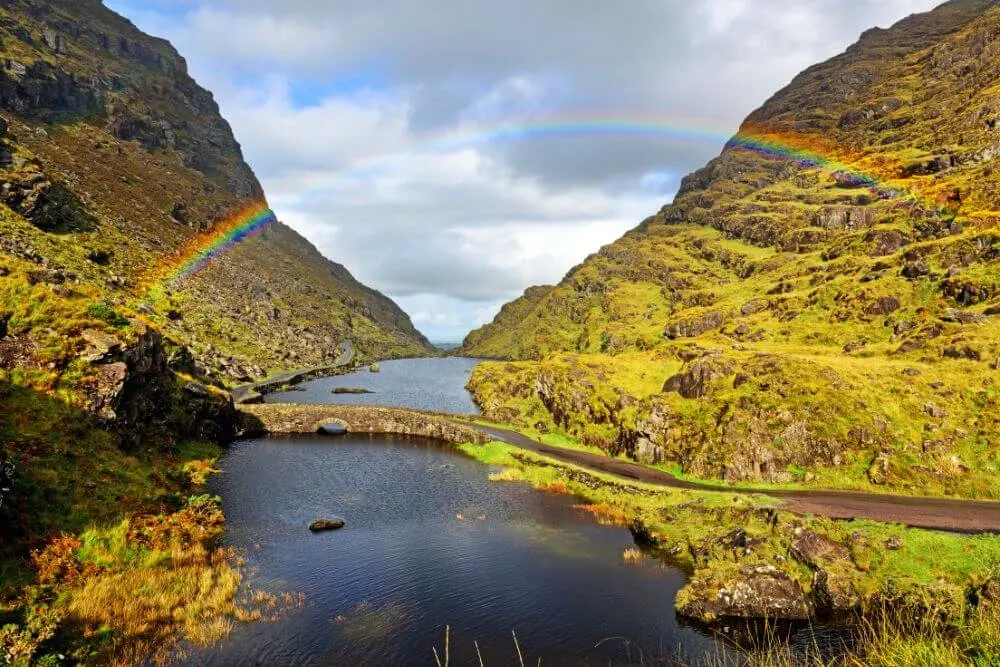
The weather in Ireland is strongly influenced by the maritime climate of the country on the western edge of Europe. The weather in Ireland by month shows that in general, the Irish weather is typically mild, and does not often feature extreme temperatures (6-12 °C or 43-54 °F).
In Ireland weather tends to be quite changeable all year round, so there is truth in the saying that you can experience all the seasons in one day (or even one hour sometimes!). The weather in Ireland in spring can include sunny days with good weather from time to time and when they do occur, be sure to make the most of them as Ireland gets considerable amounts of rainfall. It can be a bit windy as well and the sky is often overcast, especially during winter and early spring.
Ireland Spring Months Info: Below you will find a short overview of the weather in March in Ireland, followed by April and May. More weather related information that is very useful to know if you are planning a trip to Ireland can be found in the detailed weather guides (these include the typical weather in Dublin for each month). The general month guides will give you an idea of what kind of activities and attractions are suitable for each month.
Ireland in March
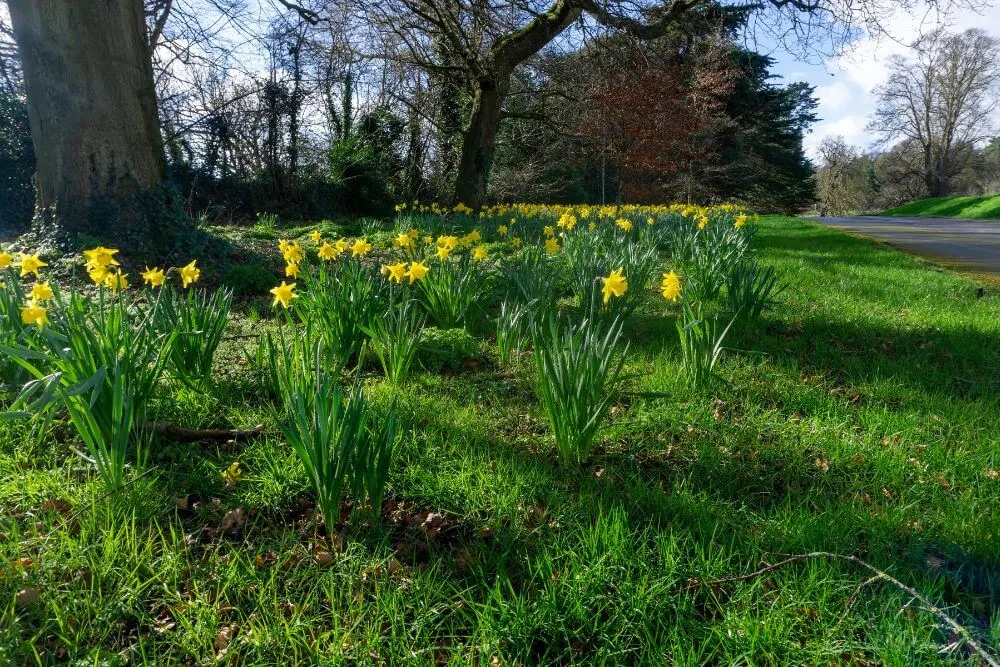
Ireland in March Weather Overview
Average Temperatures: 6-8 °C (43-46 °F)
Average Rainfall: ca. 50-100 mm (2-4”)
No. of wet days*: 11-16
*(> 1.0 mm 0.04″ precipitation)
Is March springtime in Ireland? Early March in Ireland can be blustery with many rainy days making the weather have a wintery feel, so be sure to wrap up when out and about. Sometimes the poor weather can really make you wonder, is March in spring?! But by the end of the month, spring has (usually) arrived and the days are considerably longer.
In Ireland, weather in March tends to be mild. Generally, the east coast might be a little colder than the west, but only by a degree or two. The weather in southern Ireland in March can be wet. Rainfall is usually higher along the south and west coasts, as this is where the prevailing winds coming in from the Atlantic come from.
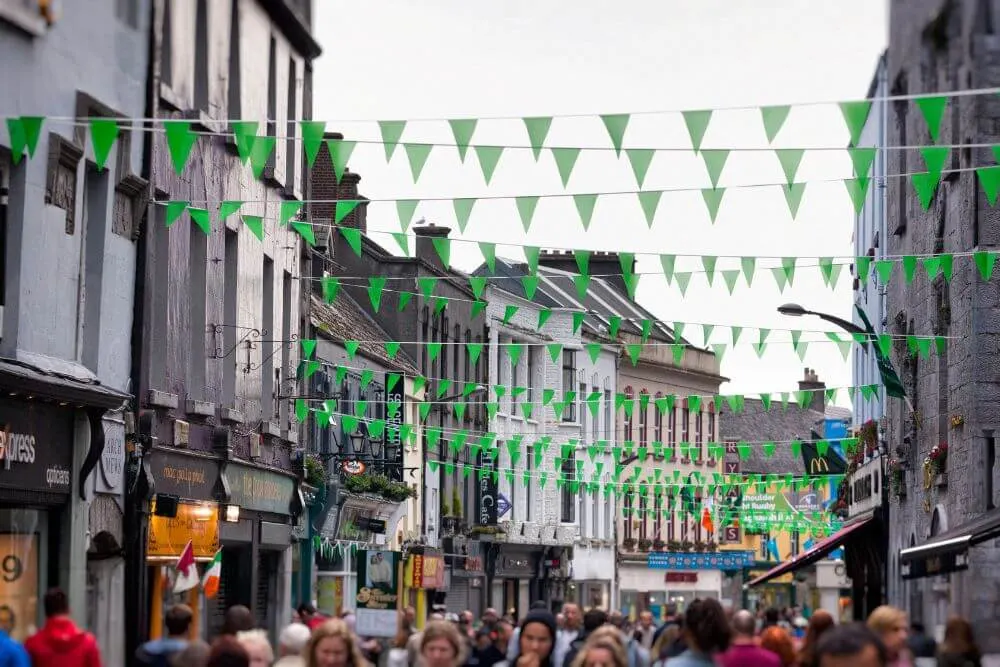
One of the main highlights of March is St. Patrick’s Day, which is on 17 March. This is a national public holiday in Ireland and marks the feast day of the country’s patron saint. St. Patrick’s Day is a very well known holiday in many parts of the world. Parades and celebrations take place not only in Ireland, but in many countries around the world.
Dublin in spring is a lively place. It is here, in the capital city, that you will find the biggest St. Patrick’s Day festival takes place in the county. While the main day of celebrating is March 17th, there are usually several days of festivities and celebrations held at different venues across the city. Many of these events are free to the public. It is a popular time for international tourists, with many people coming from the United States and Australia, not to mention the nearer neighbors from the UK and Europe.
Spring in Dublin Tip: Check out some of the parks in Dublin to explore some of the city’s most pretty areas.
For more information about Ireland weather in March and generally what to expect during the month, please check the following posts:
- Weather in Ireland March – includes in depth weather Ireland March reports across the island for the locations of Dublin, Cork, Galway and Belfast
- Ireland in March – includes what to do in Ireland in March
Ireland in April
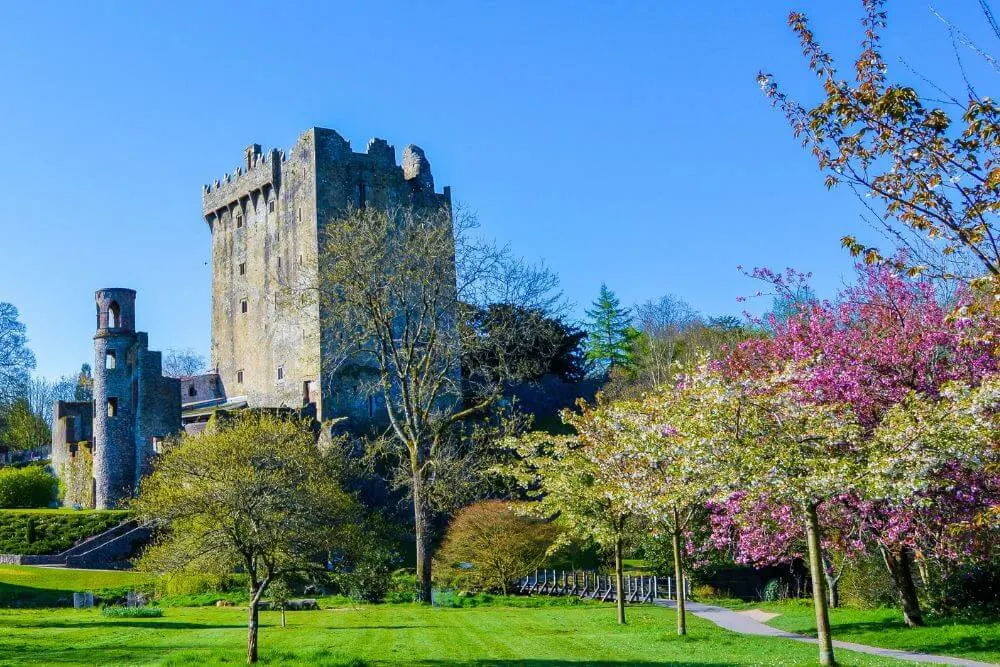
Ireland in April Weather Overview
Average Temperatures: 8-10 °C (46-50 °F)
Average Rainfall: ca. 50-75 mm (2-3”)
No. of wet days*: 10-16
In contrast to March, which can be overcast, April in Ireland is a showery month. So in between the showers, there may be some sunny spells. The frequent showers mean that you should never go far without some waterproof gear.
Spring in Ireland is well underway in April, with the days getting longer and the temperatures gradually increasing. While summer is usually the perfect time to embark on a longer road trip around Ireland, from around April onwards longer days of sightseeing along the Wild Atlantic Way can be planned into your itinerary.
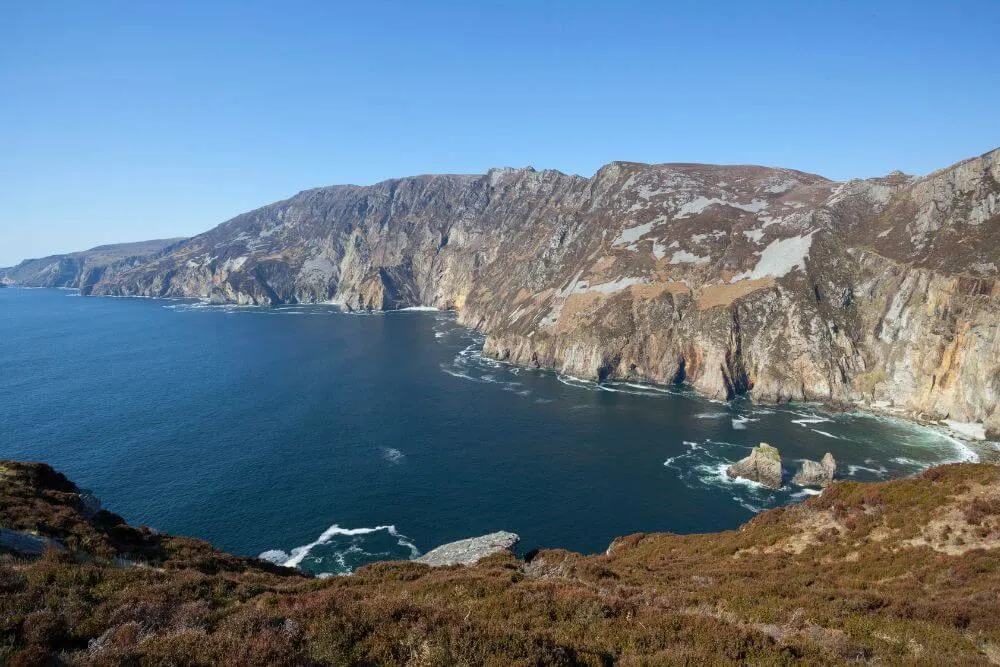
Whether you fancy visiting the dramatic landmarks of Ireland including Slieve League Cliffs in County Donegal, (which are arguably even more impressive than the Cliffs of Moher), or fancy sampling some of the gourmet food along the Wild Atlantic Way in Galway or Kinsale for example, there is certainly enough to do in Ireland in April.
Easter often falls during the month of April and this is a popular time for weekend breaks, especially for domestic tourists. Schools are usually closed for about two weeks around Easter, so some family originated attractions and events are busier during this period. For some businesses, Easter marks the start of the tourist season and many change and extend their opening hours around this time.
For more information about the weather in Ireland in April, please check the links below.
- Weather in Ireland April – includes in depth weather Ireland April reports across the island for the locations of Dublin, Cork, Galway and Belfast in Northern Ireland
- Ireland in April – includes things to do in Ireland in April
Ireland in May
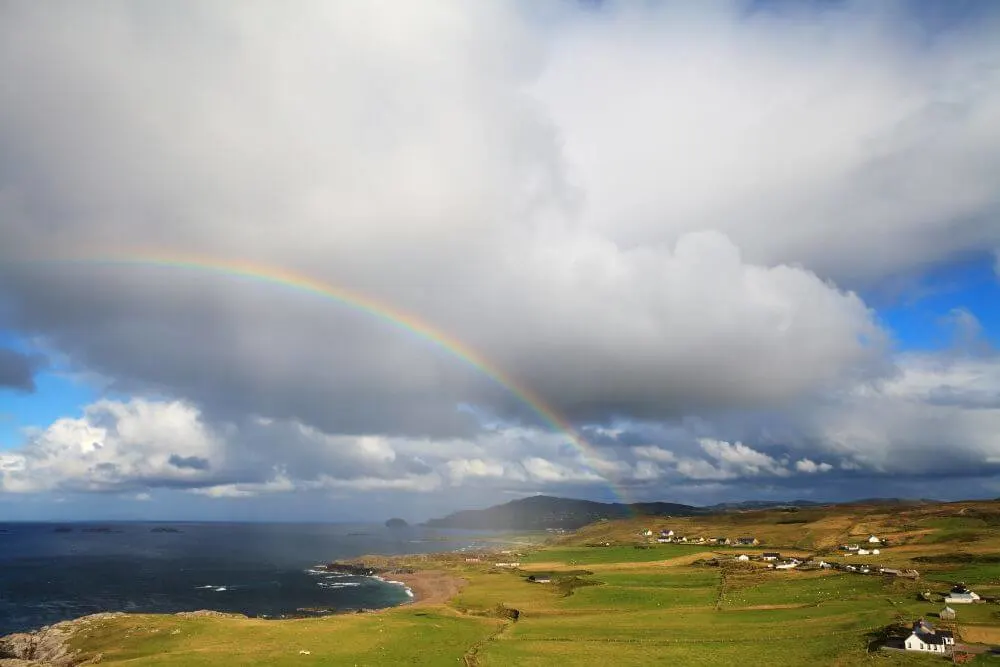
Ireland in May Weather Overview
Average Temperatures: 10-12 °C (50-54 °F)
Average Rainfall: ca. 60-80 mm (2-3”)
No. of wet days*: 11-15
May is a superb time to visit Ireland. Not only is it our personal favorite time to explore the country, it is also the time we recommend others to do so. While there are certainly no guarantees when it comes to the weather in Ireland, May can have some good weather. If you are lucky, you might even have great weather! (But you shouldn’t get your hopes too high!)
The number of daylight hours are longer at this time of year, which means you spend more of the daytime exploring and discovering the country. In addition, the weather is more settled than earlier spring and there is plenty to look forward to with summer in Ireland just around the corner.
Visitors to Ireland in May typically beat the summer crowds and as May is still in the shoulder season, there may be some good deals on flights and accommodation available.
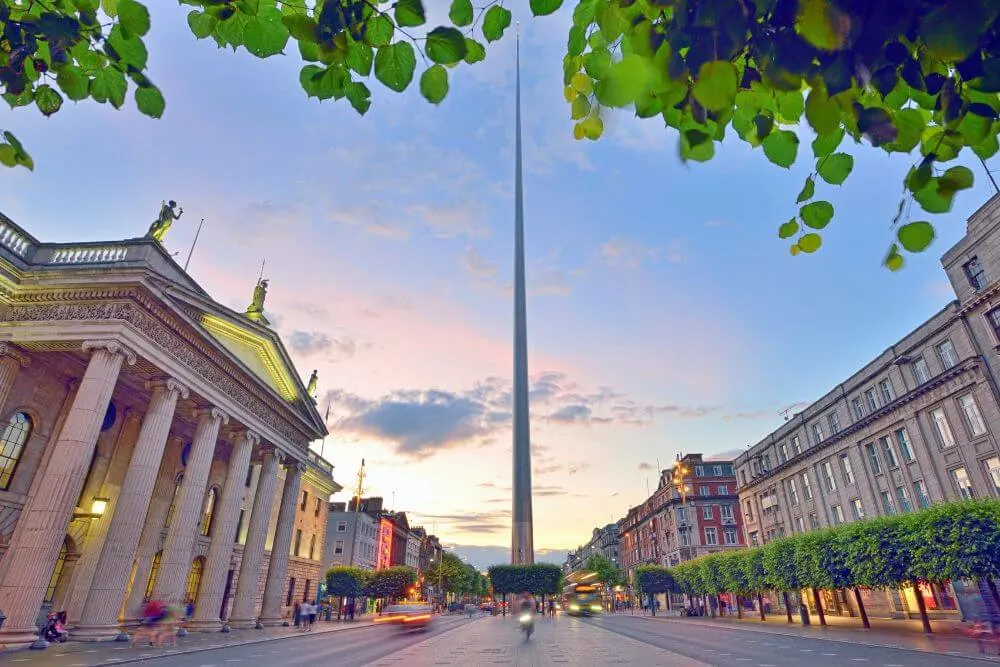
Ireland has versatile holiday possibilities at this time of year that appeal to a wide range of visitors. Whether you fancy exploring the high life of Dublin city and its thriving culture in the bustling parks and open air dining options, sauntering around a few Irish towns and villages and getting to the locals, or getting a sense of the breathtaking Irish landscape by immersing yourself in the country’s great hiking, surfing and cycling options, there is something for everyone.
For more information about Ireland in May, please check the links below.
- Weather in Ireland May – includes in depth weather weather May reports across the island for the locations of Dublin, Cork, Galway and Belfast in Northern Ireland
- Ireland in May – includes things to do in Ireland in May
What to wear in Ireland in Spring?

If you plan to travel to Ireland in spring, your suitcase should be filled with layers. Light t-shirts, jumpers will allow you to mix and match your wardrobe to suit the changeable weather and allow you to layer up or down depending on the temperature. (Layers also come in useful if you are frequently going in and out of buildings while sightseeing too!)
Clothing made of merino wool can be particularly useful as it is light, keeps you warm and does not tend to smell quickly. (This cuts down on the amount of washing that you have to do on holiday!)
Regardless of the time of year you plan on visiting Ireland, good waterproof clothing is an absolute must. A waterproof rain jacket will come in useful and is definitely worth packing. If you can, opt for a good quality jacket that will last you not just one trip to Ireland, but for many years. The light breathable ones work best when combined with layering.
While you rarely see Irish people wearing rain pants or trousers, they do come in handy, especially if you are planning on doing a lot of outdoor activities. (Wearing cold, wet jeans all day is not something you want to do on your holidays!)
A good warm hat will be a welcomed addition to your outfit on a windy day and if you suffer from cold hands, then don’t forget your gloves either!
Good Travel Tips!
Good comfortable shoes (that are well broken in!) are necessary when you are sightseeing. The last thing you want is sore feet after being out and about. Don’t forget good quality socks can also help to keep your feet feeling fresher for longer.
If you plan on doing walking or hiking, then it is worth seriously considering some boots with ankle protection. Years of hiking have shown us that it is better safe than sorry when it comes to keeping your ankles safe and not sprained on vacation.
Spring Flowers in Ireland
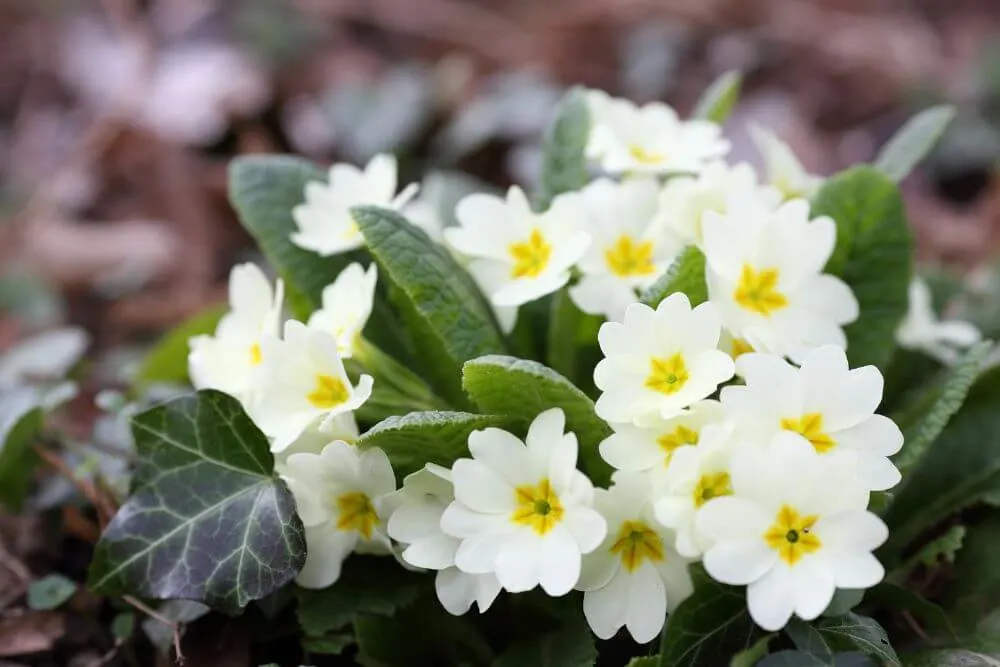
Ireland has many beautiful and unusual flower species that can be seen throughout the year. Some of the most interesting are covered in this Guide to the Flowers of Ireland (which includes the common name, scientific name and Irish name for the native Irish flowers and details about which season you will see them.)
As soon as the temperatures start to slowly increase, the flowers bloom again and bring new life to the countryside of the Emerald Isle.
Snowdrops can be seen as early as January and flower through to about March. The yellow, white and pink primroses also make an early spring appearance and can be seen bringing splashes of color to many gardens and hedgerows. Lesser Celandine can often be found in woodland areas from late winter right through to late spring in Ireland.
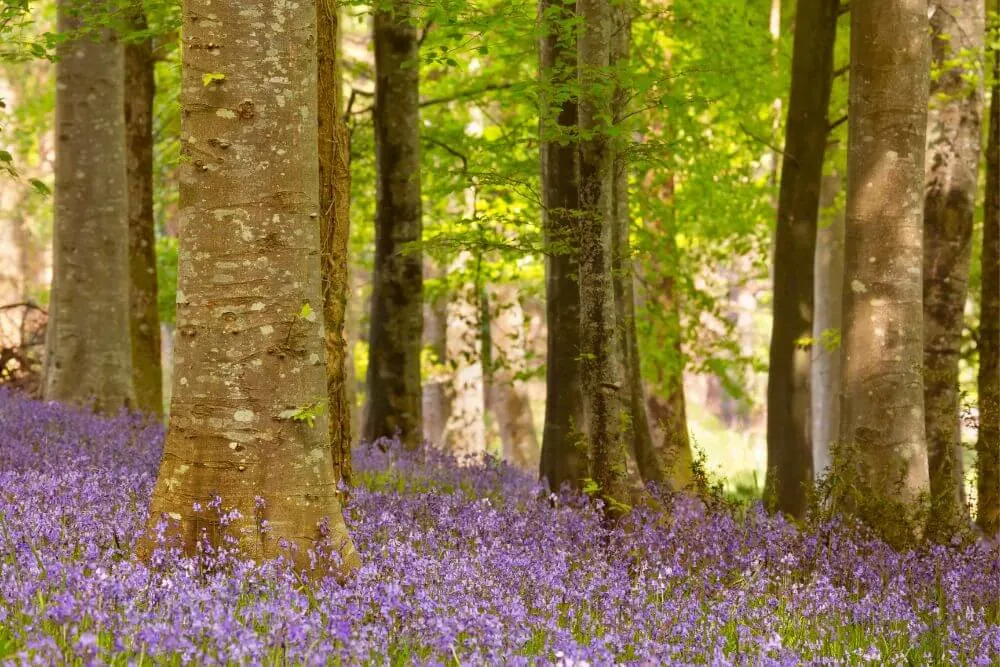
The waving white flowers of the Wood Anemone give rise to the Irish name for the plant Lus na gaoithe, which means plant of the wind. Daffodils are another common sight and can be seen along riverbanks and roundabouts throughout the country. From around April, you might be lucky enough to see wild bluebells carpeting woodland floors (keep an eye out to see if they are the native Bluebell Hyacinthoides non-scripta or the introduced Spanish Bluebell (Hyacinthoides hispanica).
Easter time in Ireland is often associated with the Easter Lily, which was used as a symbol of remembrance for those who died in the 1916 Easter Rising in Ireland. (This plant is native to southern Africa, not Ireland.)
For anyone with a strong interest in flowers and botany in general, then a trip to the Burren might be worth considering.
Spring Flowers in the Burren
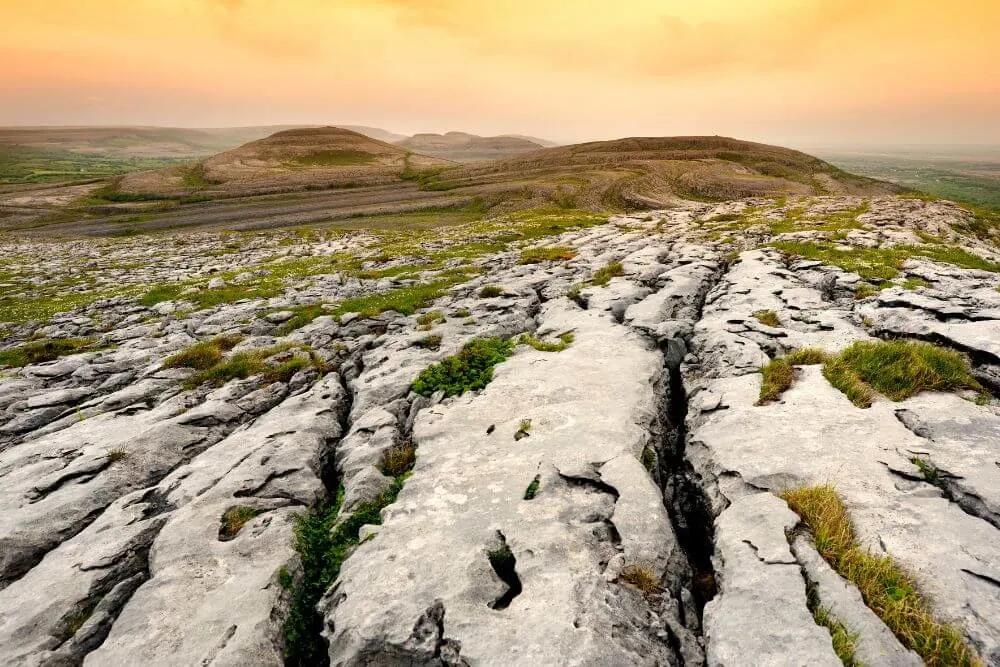
One of the most famous places in Ireland for spring flowers in the Burren in County Clare. The Burren is a very unique area in Ireland that is known for its biodiversity. More information about the animal and plant species of the Burren can be found here.
Different habitats occur in the Burren, but it is most famous for its rocky lunar limestone pavement. This habitat, along with some of the calcareous grasslands are where some of Ireland’s most special spring flowers grow.
Late spring, especially during the month of May, is a great time to visit the Burren National Park and view some of the remarkable Irish flowers there. The flowers in the Burren are well known internationally for their unusual assemblages of plants that are usually found growing in very different habitats.
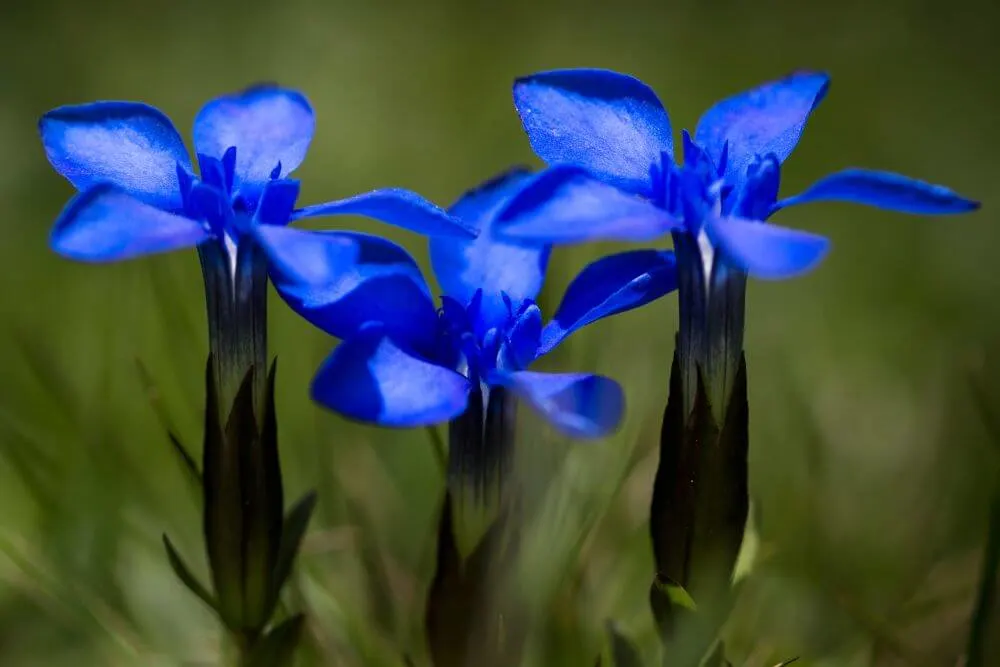
The Spring Gentian is one of the most iconic flowers found in the Burren. Its vivid blue petals are more typically found in Alpine environments and at elevations much higher than the coastal Burren area. This species flowers between April and June.
Almost all of the 27 species of orchid found in Ireland are present in the Burren. In total 23 orchid species have been recorded here today. These include the Early Purple Orchid (Orchis mascula) and the rare Bird’s-nest Orchid (Neottia nidus-avis) among others.
Please note!: that the Burren is a very ecologically sensitive area. Never pick or damage any of the flowers in the area, some of which are exceptionally rare and are protected under EU laws. If you want to get a better understanding of the significance in terms of biodiversity, geology as well as archeology of this very unusual area, it is worth getting a guided walking tour such as those offered by Heart of The Burren Walks.
Bonus Tip:
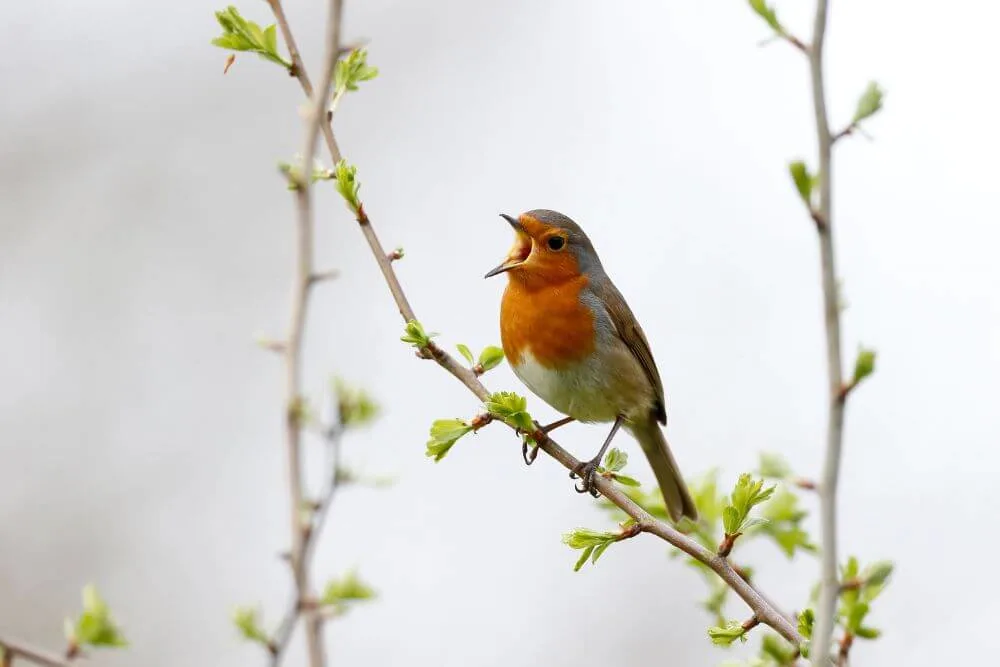
There are also plenty of garden birds in Ireland that are getting busy to nest and raise their young in Ireland during spring. Don’t get to keep an eye out for these too!
This article may contain affiliate links. If you click on one of these we may receive a small commission at no extra cost to you. Thank you for your support.
